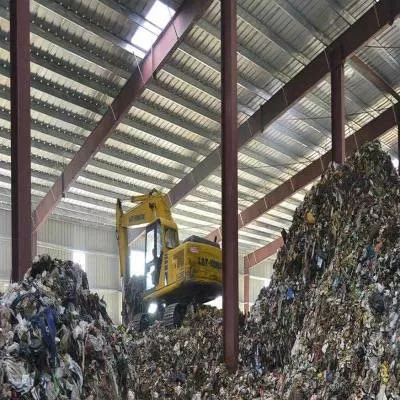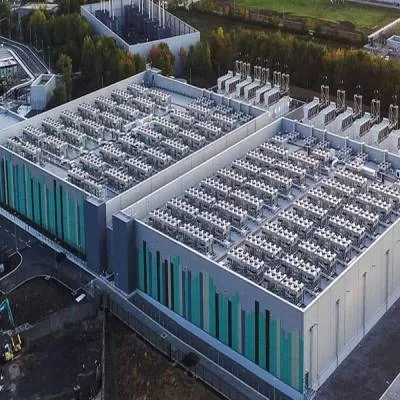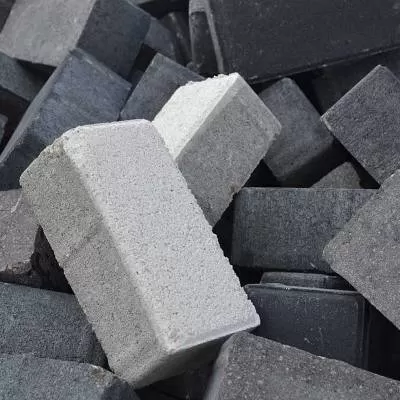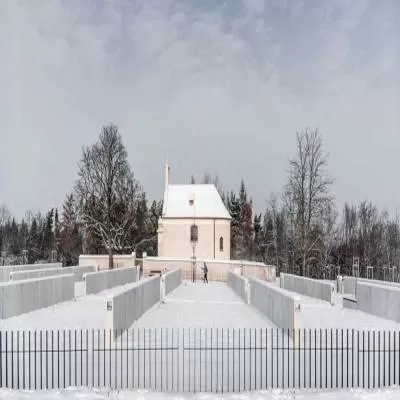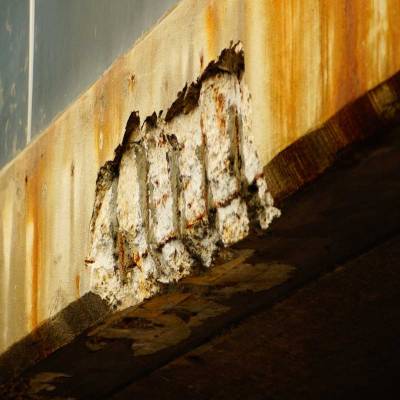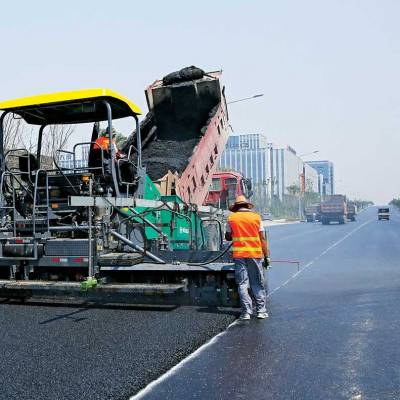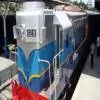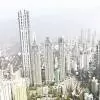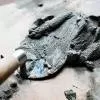- Home
- Building Material
- Concrete
- Successful Shotcreting
Successful Shotcreting
Engineer Jagvir Goyal tells us about the process and the equipment required to make it work.
Shotcrete is the concrete applied or sprayed on a surface through pressured supply. It is often used in construction and repair works of structures such as swimming pools, retaining walls, tunnel linings, mines and water-retaining structures. It is sometimes applied on the visible outer surface of an overhead concrete tank. Such tanks are often visible in the soft storey of apartments used for parking of vehicles. It is also useful in stabilisation of slopes. RCC structures become weathered with time and their reinforcement gets exposed. Similarly, wires in many pre-stressed structures get exposed with time. All these structures can be repaired by deposit of concrete through the shotcreting process. Canal linings can also be done by shotcreting, and leaking structures can receive gunite or shotcrete to stop the problem. What's more, old structures can be strengthened by shotcreting.
The shotcreting process
Shotcreting is done either through a dry or wet process. In the wet process, a pump supplies concrete through a pipeline. A nozzle is attached at the end of the pipeline. This nozzle adds compressed air to the concrete. The concrete mixed with compressed air attains high velocity and is sprayed out through the nozzle. The concrete used in the wet process is designed to have a low slump. In the dry process, dry material mix of concrete is conveyed through the pipeline to the nozzle where water is added to it.
Guniting
Guniting is another term often used by civil engineers. It is a term for shotcreting done with dry process. The cement and sand mix passed through a guniting gun or machine and deposited on a surface through large air pressure bonds well with the surface. The air pressure helps mixing as well as compaction of concrete mixture. The material deposited on concrete, masonry, stone, rocks, and even steel sticks well as its bond strength is good and the deposit is dense and strong. The thickness of the gunite can be achieved as per the desire of the user without any problem.
Which process is better?
Though the wet process is often reckoned the better, opinions differ. Each process has its plus and minus points and it depends on the job particulars whether to use the dry or wet process. Among major factors affecting the choice of process are discharge rate of concrete required; quantity of shotcrete required; capacity of air compressor and environmental concerns. If a smaller quantity of shotcrete is to be used, the dry process is better. Also, if shotcreting is to be done with interruptions, the dry process is better as the dry mix can be kept for a long time while the wet mix needs to be deposited immediately. For overhead and vertical applications too, sometimes the dry mix process looks advantageous as the nozzle man has full control on the release or addition of water and can regulate it as per his observation of the surface where the material is being deposited.
In case we are evaluating which process harms the equipment less, the wet process wins hands down. In the dry process, the dry mix of materials such as cement and aggregates has a greater abrasion effect on equipment parts than the wet mix of concrete. Thus the nozzle, pipes or hoses, lining and pads of the equipment wear out faster in case a dry process is adopted. Also, the wet process produces lesser dust than the dry process. Therefore, if there are certain environmental constraints existing in the area of work, the wet process should be used. Again, if the area of work is restricted, confined or enclosed, the wet process is preferable. In an open space with no environmental constraints, dry process can be used.
Availability of compressor
Both dry and wet processes require an air compressor at site; the dry process requires a larger compressor. Sometimes, an air compressor is available at site for some other purpose, like sand blasting, etc. In case a compressor is already available, you can use it and economise. The choice should be made after ascertaining whether the compressor capacity suits the dry or wet process. If the size of the compressor is quite large, any of the two processes can be used. If the capacity of air compressor is small, only wet process can be used.
Heat resistance
The gunite or shotcrete can be made heat-resistant by adding suitable refractory material to the ingredients as per the advice of the refractory expert. Such a deposit resists all heat and weathering attacks. Similarly, the gunite or shotcrete can be made chemical-resistant with suitable additives.
Desirable features
The desirable features of a shotcreting job are fast application, dense and fully bonded deposit, least rebound and safety of the nozzle man. When these factors are achieved, a job can be said to be successfully accomplished.
Shotcreting equipment
Shotcreting or guniting (dry process) equipment consists of the shotcrete pump of required capacity; the hoses or pipelines of required diameter; the nozzle; and the air compressor of required capacity.
Shotcrete pumps
Producers of shotcrete equipment use many types of pumps. These are supported by front jacks and outriggers on their sides during concreting operations. Shotcrete pumps can be truck-mounted also. They have material cylinders to receive cement, sand and coarse aggregates from the hopper. The material is pushed by a piston through an s-tube to the delivery line. The pumps are hydraulically and electrically enabled and act continuously to draw material from the hopper and supply it to delivery lines. All pumps are engine-equipped. The engine drives the hydraulic pumps that activate the subsequent process. There are three hydraulic circuits in the pump: one for drive cylinders, the second for s-tube shifting and the third for all other auxiliary operations.
Capacity
Shotcrete pumps are produced with different capacities varying from 10 cu m per hour to 100 cu m per hour. Diesel engines provided in the pumps are chosen from highly reliable manufacturers like Cummins as all operations and success depends on the engine. Engines from reputed firms are also quieter and ensure good working conditions for the pump operator.
Main features
While selecting a shotcrete pump, its horsepower, output volume and concrete pressure should be studied. Price competitiveness should also be checked as many manufacturers are now in the race to provide these pumps. The concrete pressure can be as high as 2,000 psi.
Checking non-clog feature
While selecting a shotcrete pump, its reverse feature should also be checked. Availability of this feature reverses the flow of concrete in reverse direction in case the delivery line gets jammed or plugged. Reversion of concrete releases the pressure at plugged point and the delivery line is clear again.
Other features
The capacity of the fuel tank should be large enough for uninterrupted continuous operation. Some pumps these days are provided with remote controls, which is an additional facility that can be availed. The cylinders of the pump should preferably be of chromed steel inside simple stainless steel for longer life. The hopper height should be as less as possible for easy loading of materials. Pumps with programmable logic controller and LCD offer better operation and control.
Robotic arms
Shotcreting machines spray the mixed material on the targeted surface either manually or through robotic arms. Use of a robotic arm ensures full safety of the shotcreting crew. During shotcreting jobs in tunnels and mines, there are instances when the crew feels potentially unsafe as the behaviour of ground conditions can't be fully predicted. Under such conditions, robotic arms allow operations from a safe place.
Manufacturers are producing machines that are suitable for use of both manual and robotic arms. Mekaster's Aliva 263i is one such equipment. Robotic arms of shotcreting equipment allow better deposit of material and less rebound as correct angle, distance and compaction can be ensured through them. These allow remote or radio control over the process. The robotic arms are all made vehicle-friendly and can be mounted on most vehicles. These are equipped with rotation cylinder, tilt cylinder and allow full nozzle rotation and a large degree tilt; are powered by diesel or electric supply; and are hydraulically operated.
Guniting machines
Guniting machines move the granular material through the hose pipe by use of compressed air supplied by the compressor installed separately. The material is fed into the hopper with a valve at its bottom. The hoppers are equipped with blades, two to five in number. The valve is kept in a closed position while feeding the hopper. From the hopper, the material is allowed to pass to a conical feed bowl, which is then moved and brought to position under the compressed air supply. The compressed air lifts the material out of the bowl and leads it through the hose pipe to the gunite nozzle where water is added to the dry material. Gunite nozzles are made of gunmetal and have a water hose attachment system provided in them with a close-open regulating lever. The guniting machines are thus supported by material supply, compressed air supply and water supply for their complete operation.
The maximum size of aggregate to be used in concrete mix should always be prescribed and followed while using guniting machines for successful functioning. Generally, this size is not allowed to exceed 20 mm. In guniting machines, the size of the air compressor at given air pressure should also be checked. Unlike pumps, guniting machines have small horizontal and vertical conveying distances. Horizontal distance can be up to 300 m in large capacity machines while the vertical convey distance may go up to 90 m. The machines weigh around 2 to 4 quintals.
Surface preparation
The old surfaces on which the shotcrete or gunite is to be deposited should always be prepared well for best results. The surface should be cleaned of all dirt, oil and rust in case reinforcement is visible. It is still better if it can be made rough by a little chipping or chiselling. Then, the bond of shotcrete or gunite with the old surface would be better and stronger. In case of vertical surfaces, the material should be deposited from top downwards.
Nozzle assembly
Shotcrete nozzles or guniting nozzle assembly includes many smaller components like reducers, elbows, many types of special clamp gaskets, nozzle, nozzle tip and hoses included in the package, which should be carefully checked and collected to make the equipment run. Non-availability of one minor part may stall the whole process. All the assembly parts should be heavy duty. The elbow is normally of reducing type, with different diameters at its two ends. The nozzle has another clamped part permanently screwed to it for inlet of air. The gunite nozzle has water rings inside it to add water to the material mixture.
In the latest state-of-the-art nozzles, the air is introduced in the nozzle through an angled opening causing a venturi action and swirling air engulfs concrete as it travels through the nozzle. The nozzle tip is made of high-density polyurethane material and kept conical in shape to increase mixing and for higher velocity. The amount of air to be added can be regulated by the nozzle man, depending upon the distance at which the material is deposited and the kind of surface.
For higher velocities, nozzle tips have smaller diameter and a velocity of even 120 m per second can be achieved for gunites. However, the material deposit in such cases is less. The lower the velocity, the higher the output but lower the compaction. The lower the velocity, the higher the compaction but lower the output.
Equipment manufacturers
Schwing Stetter markets its wet mixing shotcreting system under the name Top-Shot. Delhi's Ranson, Ashoka and Apollo are a few other notable companies who are aggressively marketing their shotcrete equipment. Ashoka's equipment is cheaper, being indigenous, and can be used even for sandblasting by changing the nozzle. Ashoka's guniting machine is fitted with a 3 hp AC electric motor and can convey concrete up to 250 m horizontal distance and 75 m vertical distance.
Putzmeister, the famous concrete pump manufacturer, markets a few models of shotcrete machines in India. Model Sika PM 407 is suitable for small tunnels and mines with a spraying arm of 16 m and gives you the option to add the Aliva-263 concrete spraying machine or the PM 702 Sika concrete pump. Aliva-263 is a two-axle shotcreting machine produced by Mekaster for both dry and wet mixes with an output of 10 to 15 cu m per hour. Sika PM 622 has a larger reach than PM 407 and has its own diesel-operated engine. It can supply up to 30 cu m per hour of wet concrete mix with a spraying arm with a maximum reach of 24 m. Sika PM 500P is highly mechanised equipment comparable with standard shotcrete pumps.
Suppliers abroad
The USA's Shea group produces many models of guniting machines and shotcrete pumps to suit all capacities and discharge ranges. Their guniting machines of larger size are named Lova (for large open vertical feed air-powered machines) and Sova (for small open vertical feed air-powered machines).
Quick bytes:
• The desirable features of a shotcreting job are fast application, dense and fully bonded deposit, least rebound and safety of the nozzle man.
• The cylinders of the pump should preferably be of chromed steel inside simple stainless steel for longer life.
• The aggregate concrete mix in guniting machines should not exceed 20 mm for their effective functioning.
- Construction
- Update
- Portal
- Magazine
- India
- October
- World
- 2010
- Shotcrete
- repair
- concrete
- tunnel
- surface
- RCC
- Canal
- linings
- nozzle
- Guniting
- compaction
- air compressor
- abrasion
- heat-resistant
- additives
- safety
- Diesel
- Cummins
- Reversion
- LCD
- pumps
- Mekaster
- Aliva
- Robotic
- chipping
- Schwing Stetter
- Top-Shot
- Delhi
- Ranson
- Ashoka
- Apollo
- Putzmeister
- Sika
- USA
- Shea
- Lova
- Sova
Engineer Jagvir Goyal tells us about the process and the equipment required to make it work. Shotcrete is the concrete applied or sprayed on a surface through pressured supply. It is often used in construction and repair works of structures such as swimming pools, retaining walls, tunnel linings, mines and water-retaining structures. It is sometimes applied on the visible outer surface of an overhead concrete tank. Such tanks are often visible in the soft storey of apartments used for parking of vehicles. It is also useful in stabilisation of slopes. RCC structures become weathered with time and their reinforcement gets exposed. Similarly, wires in many pre-stressed structures get exposed with time. All these structures can be repaired by deposit of concrete through the shotcreting process. Canal linings can also be done by shotcreting, and leaking structures can receive gunite or shotcrete to stop the problem. What's more, old structures can be strengthened by shotcreting. The shotcreting process Shotcreting is done either through a dry or wet process. In the wet process, a pump supplies concrete through a pipeline. A nozzle is attached at the end of the pipeline. This nozzle adds compressed air to the concrete. The concrete mixed with compressed air attains high velocity and is sprayed out through the nozzle. The concrete used in the wet process is designed to have a low slump. In the dry process, dry material mix of concrete is conveyed through the pipeline to the nozzle where water is added to it. Guniting Guniting is another term often used by civil engineers. It is a term for shotcreting done with dry process. The cement and sand mix passed through a guniting gun or machine and deposited on a surface through large air pressure bonds well with the surface. The air pressure helps mixing as well as compaction of concrete mixture. The material deposited on concrete, masonry, stone, rocks, and even steel sticks well as its bond strength is good and the deposit is dense and strong. The thickness of the gunite can be achieved as per the desire of the user without any problem. Which process is better? Though the wet process is often reckoned the better, opinions differ. Each process has its plus and minus points and it depends on the job particulars whether to use the dry or wet process. Among major factors affecting the choice of process are discharge rate of concrete required; quantity of shotcrete required; capacity of air compressor and environmental concerns. If a smaller quantity of shotcrete is to be used, the dry process is better. Also, if shotcreting is to be done with interruptions, the dry process is better as the dry mix can be kept for a long time while the wet mix needs to be deposited immediately. For overhead and vertical applications too, sometimes the dry mix process looks advantageous as the nozzle man has full control on the release or addition of water and can regulate it as per his observation of the surface where the material is being deposited. In case we are evaluating which process harms the equipment less, the wet process wins hands down. In the dry process, the dry mix of materials such as cement and aggregates has a greater abrasion effect on equipment parts than the wet mix of concrete. Thus the nozzle, pipes or hoses, lining and pads of the equipment wear out faster in case a dry process is adopted. Also, the wet process produces lesser dust than the dry process. Therefore, if there are certain environmental constraints existing in the area of work, the wet process should be used. Again, if the area of work is restricted, confined or enclosed, the wet process is preferable. In an open space with no environmental constraints, dry process can be used. Availability of compressor Both dry and wet processes require an air compressor at site; the dry process requires a larger compressor. Sometimes, an air compressor is available at site for some other purpose, like sand blasting, etc. In case a compressor is already available, you can use it and economise. The choice should be made after ascertaining whether the compressor capacity suits the dry or wet process. If the size of the compressor is quite large, any of the two processes can be used. If the capacity of air compressor is small, only wet process can be used. Heat resistance The gunite or shotcrete can be made heat-resistant by adding suitable refractory material to the ingredients as per the advice of the refractory expert. Such a deposit resists all heat and weathering attacks. Similarly, the gunite or shotcrete can be made chemical-resistant with suitable additives. Desirable features The desirable features of a shotcreting job are fast application, dense and fully bonded deposit, least rebound and safety of the nozzle man. When these factors are achieved, a job can be said to be successfully accomplished. Shotcreting equipment Shotcreting or guniting (dry process) equipment consists of the shotcrete pump of required capacity; the hoses or pipelines of required diameter; the nozzle; and the air compressor of required capacity. Shotcrete pumps Producers of shotcrete equipment use many types of pumps. These are supported by front jacks and outriggers on their sides during concreting operations. Shotcrete pumps can be truck-mounted also. They have material cylinders to receive cement, sand and coarse aggregates from the hopper. The material is pushed by a piston through an s-tube to the delivery line. The pumps are hydraulically and electrically enabled and act continuously to draw material from the hopper and supply it to delivery lines. All pumps are engine-equipped. The engine drives the hydraulic pumps that activate the subsequent process. There are three hydraulic circuits in the pump: one for drive cylinders, the second for s-tube shifting and the third for all other auxiliary operations. Capacity Shotcrete pumps are produced with different capacities varying from 10 cu m per hour to 100 cu m per hour. Diesel engines provided in the pumps are chosen from highly reliable manufacturers like Cummins as all operations and success depends on the engine. Engines from reputed firms are also quieter and ensure good working conditions for the pump operator. Main features While selecting a shotcrete pump, its horsepower, output volume and concrete pressure should be studied. Price competitiveness should also be checked as many manufacturers are now in the race to provide these pumps. The concrete pressure can be as high as 2,000 psi. Checking non-clog feature While selecting a shotcrete pump, its reverse feature should also be checked. Availability of this feature reverses the flow of concrete in reverse direction in case the delivery line gets jammed or plugged. Reversion of concrete releases the pressure at plugged point and the delivery line is clear again. Other features The capacity of the fuel tank should be large enough for uninterrupted continuous operation. Some pumps these days are provided with remote controls, which is an additional facility that can be availed. The cylinders of the pump should preferably be of chromed steel inside simple stainless steel for longer life. The hopper height should be as less as possible for easy loading of materials. Pumps with programmable logic controller and LCD offer better operation and control. Robotic arms Shotcreting machines spray the mixed material on the targeted surface either manually or through robotic arms. Use of a robotic arm ensures full safety of the shotcreting crew. During shotcreting jobs in tunnels and mines, there are instances when the crew feels potentially unsafe as the behaviour of ground conditions can't be fully predicted. Under such conditions, robotic arms allow operations from a safe place. Manufacturers are producing machines that are suitable for use of both manual and robotic arms. Mekaster's Aliva 263i is one such equipment. Robotic arms of shotcreting equipment allow better deposit of material and less rebound as correct angle, distance and compaction can be ensured through them. These allow remote or radio control over the process. The robotic arms are all made vehicle-friendly and can be mounted on most vehicles. These are equipped with rotation cylinder, tilt cylinder and allow full nozzle rotation and a large degree tilt; are powered by diesel or electric supply; and are hydraulically operated. Guniting machines Guniting machines move the granular material through the hose pipe by use of compressed air supplied by the compressor installed separately. The material is fed into the hopper with a valve at its bottom. The hoppers are equipped with blades, two to five in number. The valve is kept in a closed position while feeding the hopper. From the hopper, the material is allowed to pass to a conical feed bowl, which is then moved and brought to position under the compressed air supply. The compressed air lifts the material out of the bowl and leads it through the hose pipe to the gunite nozzle where water is added to the dry material. Gunite nozzles are made of gunmetal and have a water hose attachment system provided in them with a close-open regulating lever. The guniting machines are thus supported by material supply, compressed air supply and water supply for their complete operation. The maximum size of aggregate to be used in concrete mix should always be prescribed and followed while using guniting machines for successful functioning. Generally, this size is not allowed to exceed 20 mm. In guniting machines, the size of the air compressor at given air pressure should also be checked. Unlike pumps, guniting machines have small horizontal and vertical conveying distances. Horizontal distance can be up to 300 m in large capacity machines while the vertical convey distance may go up to 90 m. The machines weigh around 2 to 4 quintals. Surface preparation The old surfaces on which the shotcrete or gunite is to be deposited should always be prepared well for best results. The surface should be cleaned of all dirt, oil and rust in case reinforcement is visible. It is still better if it can be made rough by a little chipping or chiselling. Then, the bond of shotcrete or gunite with the old surface would be better and stronger. In case of vertical surfaces, the material should be deposited from top downwards. Nozzle assembly Shotcrete nozzles or guniting nozzle assembly includes many smaller components like reducers, elbows, many types of special clamp gaskets, nozzle, nozzle tip and hoses included in the package, which should be carefully checked and collected to make the equipment run. Non-availability of one minor part may stall the whole process. All the assembly parts should be heavy duty. The elbow is normally of reducing type, with different diameters at its two ends. The nozzle has another clamped part permanently screwed to it for inlet of air. The gunite nozzle has water rings inside it to add water to the material mixture. In the latest state-of-the-art nozzles, the air is introduced in the nozzle through an angled opening causing a venturi action and swirling air engulfs concrete as it travels through the nozzle. The nozzle tip is made of high-density polyurethane material and kept conical in shape to increase mixing and for higher velocity. The amount of air to be added can be regulated by the nozzle man, depending upon the distance at which the material is deposited and the kind of surface. For higher velocities, nozzle tips have smaller diameter and a velocity of even 120 m per second can be achieved for gunites. However, the material deposit in such cases is less. The lower the velocity, the higher the output but lower the compaction. The lower the velocity, the higher the compaction but lower the output. Equipment manufacturers Schwing Stetter markets its wet mixing shotcreting system under the name Top-Shot. Delhi's Ranson, Ashoka and Apollo are a few other notable companies who are aggressively marketing their shotcrete equipment. Ashoka's equipment is cheaper, being indigenous, and can be used even for sandblasting by changing the nozzle. Ashoka's guniting machine is fitted with a 3 hp AC electric motor and can convey concrete up to 250 m horizontal distance and 75 m vertical distance. Putzmeister, the famous concrete pump manufacturer, markets a few models of shotcrete machines in India. Model Sika PM 407 is suitable for small tunnels and mines with a spraying arm of 16 m and gives you the option to add the Aliva-263 concrete spraying machine or the PM 702 Sika concrete pump. Aliva-263 is a two-axle shotcreting machine produced by Mekaster for both dry and wet mixes with an output of 10 to 15 cu m per hour. Sika PM 622 has a larger reach than PM 407 and has its own diesel-operated engine. It can supply up to 30 cu m per hour of wet concrete mix with a spraying arm with a maximum reach of 24 m. Sika PM 500P is highly mechanised equipment comparable with standard shotcrete pumps. Suppliers abroad The USA's Shea group produces many models of guniting machines and shotcrete pumps to suit all capacities and discharge ranges. Their guniting machines of larger size are named Lova (for large open vertical feed air-powered machines) and Sova (for small open vertical feed air-powered machines). Quick bytes: • The desirable features of a shotcreting job are fast application, dense and fully bonded deposit, least rebound and safety of the nozzle man.• The cylinders of the pump should preferably be of chromed steel inside simple stainless steel for longer life.• The aggregate concrete mix in guniting machines should not exceed 20 mm for their effective functioning.



